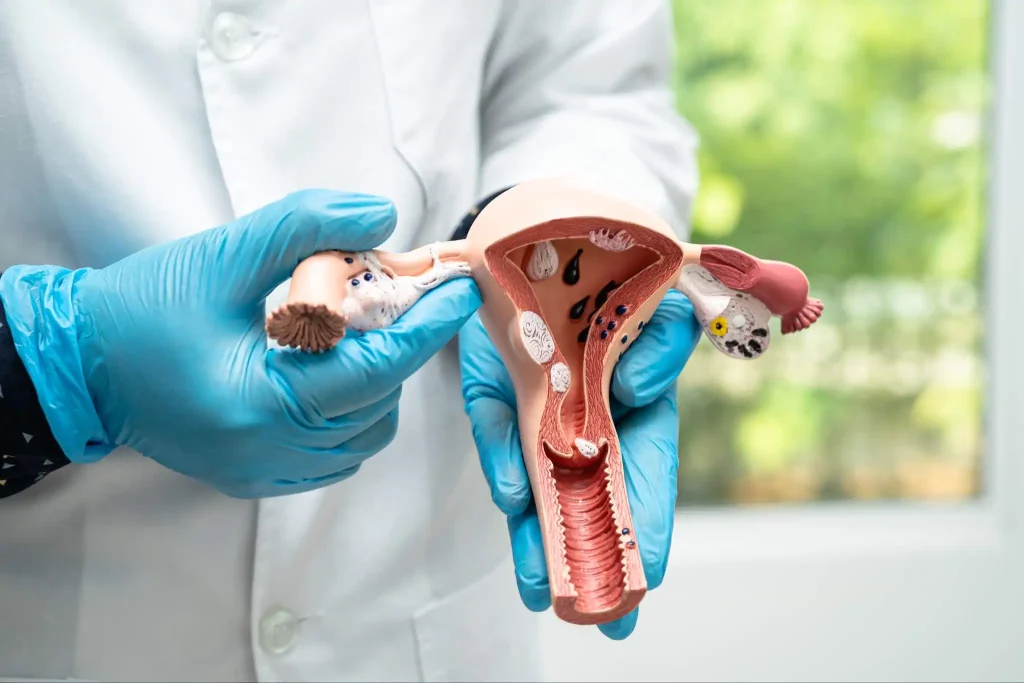Uterine fibroids—also known as leiomyomas or myomas—are non-cancerous growths of the uterus that can appear at any age but are most commonly found during a woman’s reproductive years. Though benign, these growths can cause a range of physical, emotional, and psychological issues, often impacting the quality of life in profound ways. Despite being so prevalent, fibroids remain misunderstood and overlooked, especially in societies where women’s reproductive health is not openly discussed.
What Are Uterine Fibroids?
Fibroids develop from the smooth muscle tissue of the uterus. They can grow inside the uterine wall, protrude into the uterine cavity, or extend outward from the uterus. They range dramatically in size—from undetectable, microscopic nodules to large, bulky masses that distort the shape of the womb. While not cancerous, their location and size can influence symptoms, which can be life-altering.
Some women may live with fibroids for years without ever knowing they have them. Others may experience symptoms so severe that it interferes with daily activities, careers, intimate relationships, and mental well-being. Common symptoms include heavy menstrual bleeding, pelvic pain, bloating, frequent urination, fatigue, and fertility challenges. Yet, despite the widespread nature of this condition, silence surrounds it.
The Emotional and Social Toll
Living with fibroids is often a private struggle. In many cultures, conversations about menstruation, fertility, or reproductive health are considered taboo. This silence isolates women, leaving many confused, ashamed, and unsupported.
The impact of fibroids extends far beyond the physical. Imagine explaining frequent absences at work or school, navigating sexual relationships while in pain, or dealing with the heartbreak of infertility. The emotional strain is heavy, and in some cases, more debilitating than the physical symptoms. For many women, receiving a fibroid diagnosis after years of unexplained suffering is both a relief and a revelation—but it often comes with fear, anxiety, and questions about the future.
What Causes Fibroids?
Although the exact cause remains unknown, multiple factors contribute to fibroid development:
-
Hormonal Influences: Oestrogen and progesterone, hormones that regulate the menstrual cycle, appear to stimulate fibroid growth. These hormones are more active during reproductive years, which explains why fibroids tend to grow during this time and shrink after menopause.
-
Genetic Predisposition: A woman with a family history of fibroids is at significantly higher risk, indicating a hereditary link.
-
Environmental Factors: Exposure to certain endocrine-disrupting chemicals, such as phthalates found in plastics and beauty products, has been associated with an increased risk of fibroids.
-
Lifestyle Factors: Obesity, high red meat consumption, low intake of fruits and vegetables, and early onset of menstruation are all linked to fibroid growth. Excess fat can elevate oestrogen levels, creating a hormonal environment conducive to fibroid formation.
-
Emotional Stress: Research increasingly suggests that chronic stress and unresolved trauma may affect hormonal balance and contribute to fibroid development. Although the link is still being studied, it emphasizes the importance of holistic well-being.
Diagnosing Fibroids
Diagnosis often begins with a pelvic examination and is confirmed through imaging techniques such as ultrasound or MRI. These tools help identify the number, size, and position of fibroids. In some cases, a hysteroscopy—a procedure using a thin camera inserted into the uterus—may be necessary to visualize fibroids located inside the uterine cavity.
Because fibroid symptoms often resemble those of other conditions like endometriosis or pelvic inflammatory disease, accurate diagnosis is critical for effective treatment.
Treatment Options: From Observation to Advanced Therapies
Treatment decisions depend on several factors: the severity of symptoms, the number and size of fibroids, their location, and the woman’s reproductive goals.
Not all fibroids require treatment. If symptoms are mild or absent, monitoring the fibroids with regular check-ups may be sufficient. However, when they impact daily life or fertility, several treatment paths are available:
1. Medication:
-
Hormonal therapies, such as birth control pills or GnRH agonists, can shrink fibroids and control bleeding but often provide only temporary relief.
2. Minimally Invasive Procedures:
-
Uterine Artery Embolisation (UAE): Cuts off blood supply to fibroids, causing them to shrink.
-
High-Intensity Focused Ultrasound (HIFU): A non-invasive treatment that uses focused sound waves to destroy fibroid tissue. This is becoming popular in Nigeria and globally for its safety and effectiveness.
-
Ultrasound-Guided Focused Ultrasound Surgery (FUS): Similar to HIFU but guided by real-time imaging.
3. Surgical Interventions:
-
Myomectomy: Removes fibroids while preserving the uterus—ideal for women who wish to conceive.
-
Hysterectomy: Complete removal of the uterus. This offers a permanent solution but eliminates the possibility of future pregnancies.
Each option carries its own benefits and risks, so individualized care and shared decision-making with a healthcare provider are crucial.
Preventive Measures and Lifestyle Adjustments
While fibroids cannot always be prevented, early detection and lifestyle adjustments can improve outcomes:
-
Monitor Menstrual Patterns: Keep track of your cycle and symptoms.
-
Maintain a Healthy Weight: This helps regulate hormone levels.
-
Eat a Balanced Diet: Include fruits, vegetables, and whole grains. Reduce red meat and processed food intake.
-
Reduce Stress: Engage in stress-reducing practices like yoga, meditation, or therapy.
-
Regular Gynecological Exams: These help detect abnormalities early and keep your reproductive health in check.
Changing the Narrative
The silence around fibroids is dangerous. We must change the narrative by encouraging open conversations in homes, schools, and workplaces. Education is the first step to empowerment. Every woman deserves to understand her body and seek help without shame or fear. Every girl should know about fibroids before they become a crisis in her life.
Healthcare professionals, policymakers, and community leaders must recognize uterine fibroids as more than just a medical issue. It is a public health concern that requires attention, funding, education, and compassionate care.
The Way Forward
Science continues to advance in understanding fibroids and developing effective treatments. But beyond medicine, the real power to transform lies in breaking the silence, promoting education, and showing empathy.
Fibroids affect the whole woman—her body, mind, relationships, and future. It’s time to give her the knowledge, tools, and support to take control of her health journey. When we talk about fibroids openly, we reduce stigma, foster awareness, and save lives.
Because every woman’s health matters—and every woman deserves to live without pain, shame, or fear.












